If you don’t know where to pitch a tent, it can significantly impact the comfort and safety of your trip.
Location really is everything!
If you wish to make your camping trip smooth and worry-free, it’s important to learn how to find the ideal camping spot.
To help you find the best place to pitch your tent, so you can have an enjoyable camping trip, review these 9 tips.
Tip 1: Find Flat Ground
Whether you’re at the top, bottom, or in the middle of a hill, all these locations pose a threat to your safety. Try to stay away from hills as much as possible.
Your top priority should be finding flat ground.
Once you find it, clear it of any debris – rocks, sticks, leaves and trash.
This will make being in your tent more comfortable and prevent damage to the bottom of your tent.
In case you can not find flat ground and have to settle for slightly sloping ground, make sure you position the tent door downhill.
This makes it less likely for the rain to get in or for sudden gusts of wind to get caught inside the tent. And also be sure to position your head uphill and feet pointed downhill while sleeping.
Tip 2: Find a Large Area
Your campsite needs to have room for your tent, guy lines, and fire pit.
If you try to squish everything into a small area, you run the risk of your guy lines getting cut or tripped over.
Not to mention it catching on fire if the campfire is too close. It’s important to have a distance of 40-50 feet between your tent and the campfire.
Having ample room also gives you more privacy from other campers.
Tip 3: Setup Near Bushes
This is not mandatory, but finding flat ground near bushes will provide extra protection from wind and rain and provide some additional privacy.
Tip 4: Avoid Pitching Under a Tree
Pitching under a tree might sound like the best idea, but it’s not as good an idea as you think.
If it rains, water will drip onto your tent, the tree roots could be a problem and in the worst-case scenario, a broken branch might fall on the tent.
Tip 5: Avoid Wet Ground
Wet and marshy ground is the worst place to set up a tent.
It not only makes pitching difficult, but will also increase the likelihood of water seeping into the tent.
Tip 6: Don’t Pitch In Direction of the Sun
Unless you like the heat and constantly sweating, it’s best to avoid setting up in direct sunlight.
If possible, find a shady spot.
Direct sun on the tent can also cause discoloration and make your tent color fade faster.
Tip 7: Consider Wind Direction
It might not be the easiest task, but try to determine the direction of the wind.
It’s best to position your tent so that the wind is hitting the back or side, not the front of your tent.
This will prevent the inside of your tent from getting wet when it rains and even blowing away in a strong gust.
Tip 8: Find a Water Source
If you are camping outside of a designated campground, it’s important to be near water.
When you do find water, be sure to camp at least 100 feet away. This will prevent your tent from getting wet or the ground getting waterlogged.
Tip 9: Check the Soil
Make sure the soil is firm enough to hold your tent stakes, but not so hard that you end up breaking a stake.
If the ground is too soft, it will not support your stakes and guy lines.
BONUS: Tips for Camping in the Snow
The best spot to camp during winter is on snow or on bare ground that supports little or no plant growth.
Avoid choosing a campsite near trees with heavy snow loads which may drop off in wind or during warmer daytime temperatures.
If you are camping in the mountains, avoid valleys and slopes that are prone to avalanches.
Once you find a suitable spot, use your snowshoes or skis to tamp down the ground to create a solid, firm surface.
We said above that you should avoid setting up your tent in direct sunlight. Well, this is not necessarily true when camping in the winter.
When you are camping in colder temperatures, it’s better to position your tent where you’ll receive the most sun for the majority of the day.
Go Pitch a Tent!
After reading this guide, we hope you now know where to pitch a tent on your next camping trip.
But the most important tip comes after your camping trip is over.
Always leave your campsite cleaner than how you found it. Pick up your trash and any trash you find left by other campers.
Our forest friends will thank you!

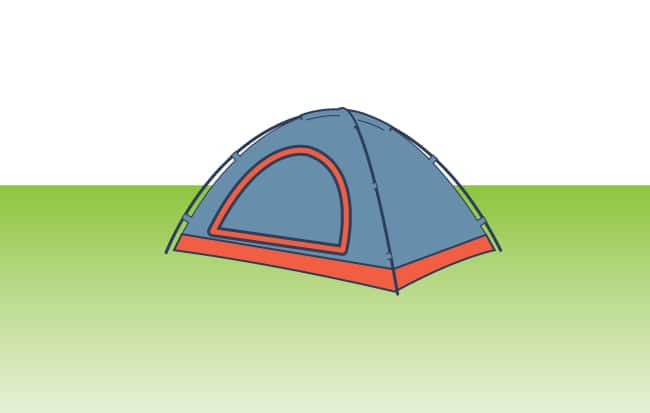
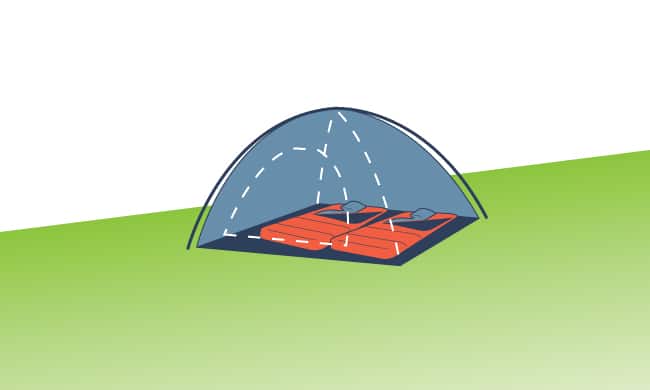
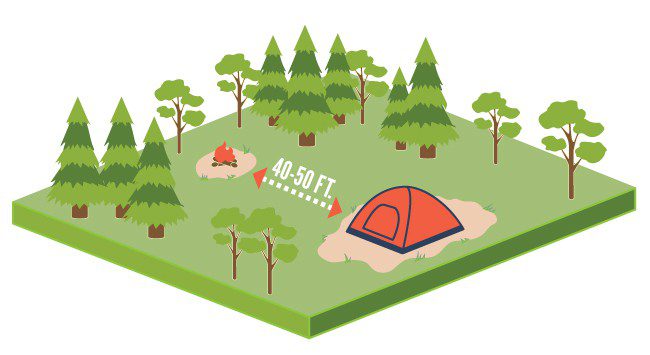
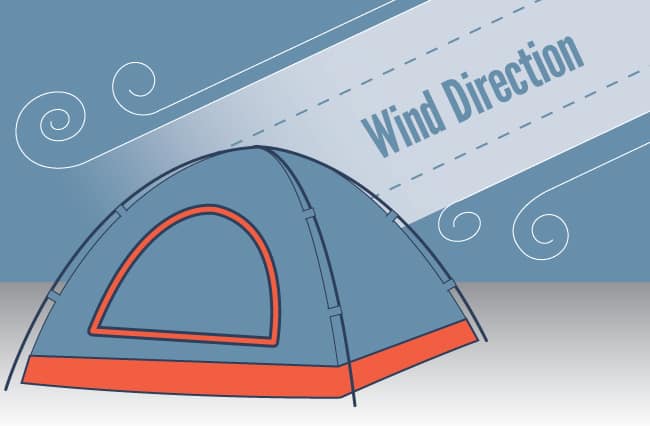
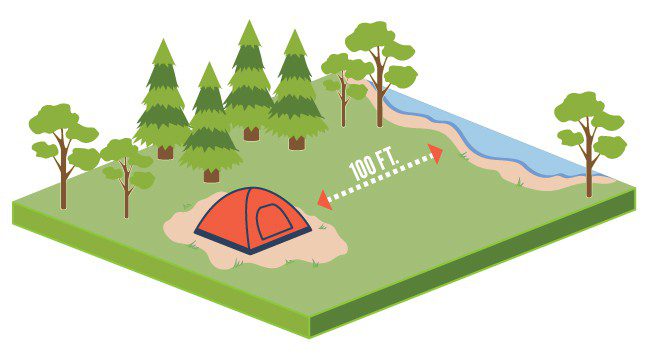
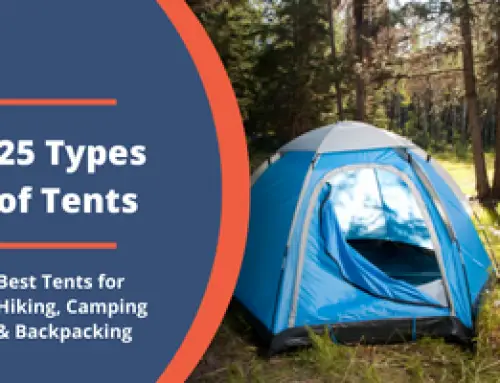







Leave A Comment